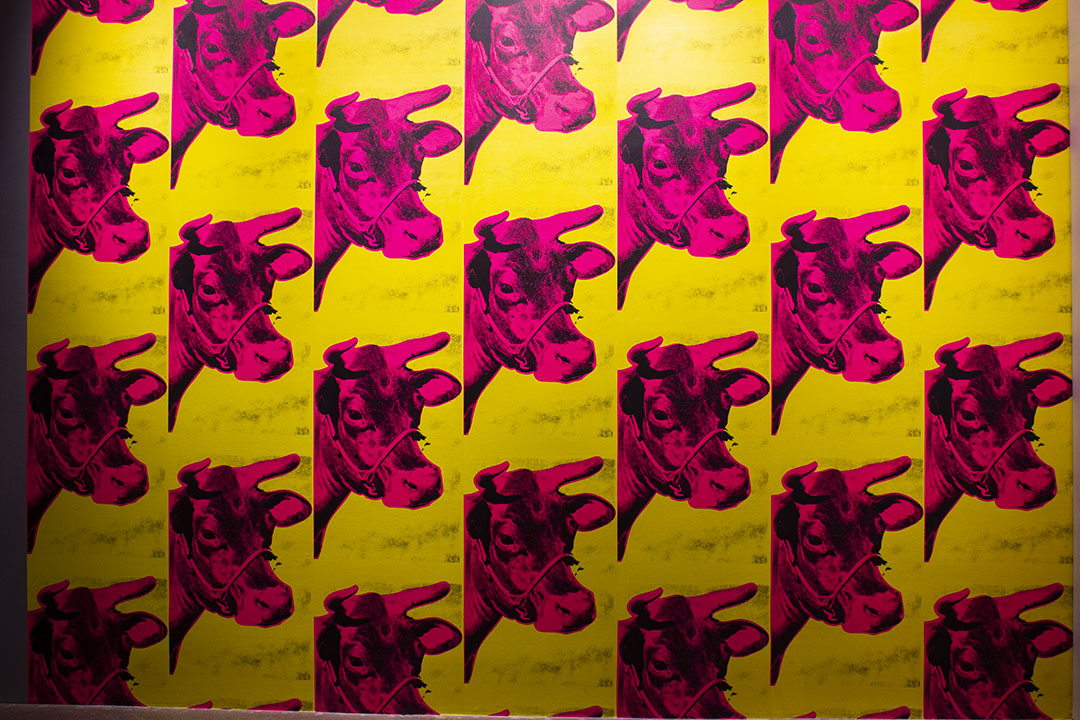Most people have undoubtedly heard of the twentieth century pop artist Andy Warhol. It’s almost impossible to have not heard about him because of his sheer influence on pop culture and the art world. However, like most people, my knowledge of his work used to go only as far as the Campbell’s soup cans and Marilyn Monroe portraits, until I walked into the Andy Warhol exhibition at the Art Gallery of Ontario (AGO).
The character I envisioned as ‘the soup guy’ — the man who mass-produced art intended for commercial consumption — came to life as a complex, fascinating figure: an outsider who tried to fit in, but also a cultural critic who highlighted the commodification of art while participating in the creation of commodities himself.
Perhaps the most important piece of the exhibition, in my opinion, is the self-portrait of Warhol displayed at the entrance, setting the stage for the rest of the exhibition and positioning himself as his biggest subject. Warhol’s propensity to include himself as the centrepiece of a lot of his work — and also lend his image to product endorsements for things like hairspray and fast food — made him into a brand of his own. One might call him the first social media influencer.
The exhibition is laid out almost like a biography of Warhol, starting with pictures from his early years — quaint family photos depicting a young Andrew Warhola, the child of Slovakian immigrants, in Pittsburgh — and moving on through time, from his early drawings and paintings to his famous silkscreen prints and portraits.
When moving through the works that Warhol created throughout his life, I could see his transition from a young painter to a commercial artist. Warhol created works using images of celebrities; in the process, he became a celebrity himself. I always knew Warhol the pop artist and Warhol the cultural critic, but at this exhibition, I learned about Warhol the human. I started to see him dropping the ‘a’ from his surname, a vulnerable act of trying to fit into the world he found himself in. A lot of his works took on a new air of sincerity; before, I only used to see the cynicism in them.
In his depictions of Campbell’s soup cans and Coca-Cola bottles, I started noticing his love for all of the objects that permeate his pieces. I had somehow failed to see this at first. What was most striking to me was how Warhol presents the celebrities in his portraits in the same light as his favourite objects — as consumer goods. They almost seem like a value judgement on the celebrities themselves, implying that the humans behind the images are interchangeable as well.
This motif became a bit problematic for me when it was applied to other subjects. Perhaps one of the most noteworthy works in the exhibition was the collection of portraits that Warhol created of Latina drag queens and trans women, entitled Ladies and Gentlemen. The striking portraits, full of expressive colours, brushwork, and even finger painting, frame the subjects in a playful and glamorous light. It also dramatizes gender as an aspect of human identity.
However, at the same time, the names of most of the models are unknown; only a few names are known because Warhol asked them to sign their photographs. As I looked at the portraits of these people, I couldn’t help but see them disappearing into the images, as if Warhol was more interested in their performance as trans women than their lived experiences — he didn’t even care to ask for all of their names.
Another piece that made me stop in my tracks was one called I am blind. It’s made of nine identical photographs sewn together in a grid and it depicts a man facing away from the camera with a sign hanging from his back. The sign reads, “I am blind please buy a pencil thank you.” Using the suffering of someone as an object of appreciation did not sit well with me, especially considering the highly commercial nature of Warhol’s art and how removed the man in the painting is from the piece. He isn’t even facing the camera.
I went to the Andy Warhol exhibition expecting to be greeted with the clichés that the public has typically always seen at art exhibitions. However, I ended up learning about the man that the public did not see.
I saw the admiration that Warhol had for the cultural icons that he parodied and critiqued in his work. I learned about him as a man who was always trying to fit into a mold that he had participated in creating. Most importantly, I learned about how sometimes his work was an incomplete representation of himself and the world he attempted to portray.


